Peace is on everyone's lips these days. All claim to want it, many invoke it. Some even boast that they can bring peace to Europe, Middle East and the world in less than two days. Donald speaks of peace. Vladimir speaks of peace. Volodymyr speaks of peace. Olaf speaks of peace. So do Sahra, Alice, Bernd and Viktor. But few, if any, speak of freedom or justice. Peace must prevail, even if it's unjust and costs freedom.
In Germany, 'peace' has regained its prominent place on the 2024 election posters. The Social-Democratic SPD posters made voting for them a condition for peace:
The Alternative for Germany AFD, the self-proclaimed party of peace, claimed that only the reform (or dismantling) of Europe can restore peace:
Sahra Wagenknecht's Alliance BSW asked voters to choose between war and peace:
The posters of the Left Party - Linke - warned against killing peace:
The peace dove has returned to Berlin and Germany. It never left.
This is nothing new under German skies, especially in the east: East Berlin, East Germany. Here, the dove of peace - that universal symbol dating back to Noah and his ark - never really disappeared.
Look at the striking dove of Eisenhüttenstadt, the Brandenburg city on the Polish border, established by the GDR as East Germany's steel industry capital. Here, the dove symbolizes not only peace but also commemorates the German-Soviet friendship once hailed as a safeguard of peace:
Walking through the streets of East Berlin, observing the mosaics and monumental murals at a calm pace, the attentive eye keeps coming across the white dove several times: since 1987 it has adorned one of the houses in the Nikolaiviertel, a model district of East Berlin and the calling card of the "City of Peace".
In the vast area of Alexanderplatz, the dove can be found both on the mural of the Haus des Lehrers, a GDR cultural and educational centre, and on the facade of the Berliner Zeitung's press café:
Heading northeast from the area, the dove also appears on the facade of the Haus des Reisens (House of Travel). This building, once the headquarters of the GDR's state-owned travel company — VEB Reisebüro — features the dove as a prominent element in a relief poetically titled Der Mensch überwindet Zeit und Raum (Man Transcends Time and Space):
And so on.
The wings of the dove of peace are intertwined with the history of the GDR/DDR from its very beginning, a unique case in world history, to the point of identifying the GDR almost more with the dove than with its official symbol: the hammer and compass surrounded by the wreath of ears. The story of this identification is that of a state that defined itself as a Friedenstaat (State of Peace). It is a narrative based on propaganda, hypocrisy, and regime falsehoods. However, it is a story so deeply rooted in the consciousness of those who were socialized in the GDR, and so seductive for the younger anti-Western generations, that it re-emerges today as an alternative political and historical narrative and, ultimately, as a tool for electoral propaganda. It is a German story. It is a European story.
1949: Birth of a symbol.
The German Democratic Republic was founded on October 7, 1949. Nine months earlier, on January 9, 1949, Pablo Picasso created Dove, a black-and-white lithograph inspired by a Milanese pigeon — a gift from his friendHenri Matisse. When poet Louis Aragon, a supporter of the French Communist Party, visited Picasso's studio and saw the dove, he had an epiphany: this image would become the logo of the Paris Peace Congress in April 1949 and the symbol of the World Peace Movement.
In November 1949, the newly established Berliner Ensemble Theater, founded by Bertolt Brecht and a cornerstone of the GDR's emerging cultural scene, adopted the Parisian dove as its logo. From that moment, the dove's wings spread over East German politics and society. On July 1, 1952, images from the World Peace Congress in East Berlin circulated globally, featuring Picasso's dove prominently displayed above the stage, accompanied by the programmatic slogan:
"Germany must become a land of peace"
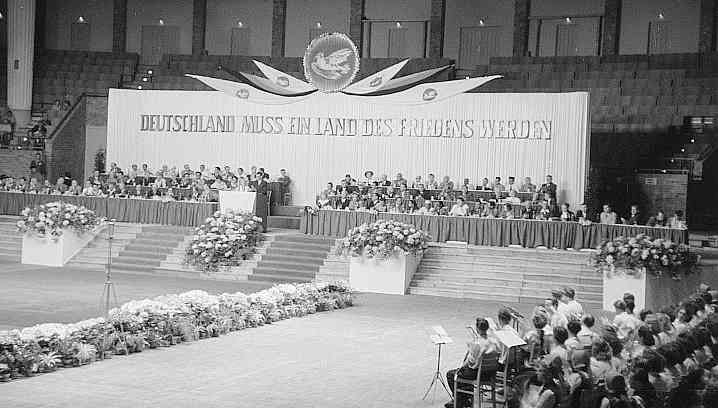
In 1949, 22-year-old kindergarten teacher Erika Schirmer, a refugee from Silesia living in Thuringia, discovered Picasso's Peace Dove. Inspired by this symbol, she composed a children's song in a matter of days. The song quickly became a favourite at youth events and was included in all school books. It remained popular until 1990, when it was removed from the canon of the unified German school system. The simple verses, set to a simple melody, are as follows:
Kleine weiße Friedenstaube, fliege übers Land; Allen Menschen, groß und kleinen, bist du wohlbekannt. / Du sollst fliegen, Friedenstaube, allen sag es hier, daß nie wieder Krieg wir wollen, Frieden wollen wir. / Fliege übers große Wasser, über Berg und Tal; Bringe allen Menschen Frieden, grüß sie tausendmal. / Und wir wünschen für die Reise Freude und viel Glück, Kleine weiße Friedenstaube, komm recht bald zurück!
Little white dove of peace, fly across the land; To all people, big and small, you are well-known. / You shall fly, dove of peace; Tell everyone here, that we never want war again: We want peace. / Fly over the great waters, over mountain and valley; Bring peace to all people, greet them a thousand times. / And for your journey we wish you joy and much luck, Little white dove of peace, come back soon!
The GDR as a "State of Peace".
The GDR (German Democratic Republic) viewed itself as a "Friedensstaat" — a "State of Peace." This claim stemmed directly from Marx and Engels' Communist Manifesto:
In dem Maße, wie die Exploitation des einen Individuums durch das andere aufgehoben wird, wird die Exploitation einer Nation durch die andere aufgehoben. Mit dem Gegensatz der Klassen im Innern der Nation fällt die feindliche Stellung der Nationen gegeneinander.
As the exploitation of one individual by another is abolished, the exploitation of one nation by another is abolished. With the antagonism of classes within the nation, the hostile stance of nations towards one another falls away.
Karl Marx – Friedrich Engels, Manifest der Kommunistischen Partei, 1848
With this claim, further interpreted by Lenin and his acolytes, came the ambiguity of this pacifist stance: capitalism was equated with fascism and seen as the root of all wars. Consequently, the only path to universal peace was defeating capitalism. This view diverges significantly from, say, Immanuel Kant's concept of perpetual peace.
In the GDR, Leninist thinking manifested as a peculiar blend of professed anti-militarism, defensive readiness, anti-imperialism, and paradoxically, remilitarization and rearmament to confront the Western bloc.
This conception of peace included the view that wars could not originate from other socialist states. Consequently, the numerous Soviet military interventions were always framed as "missions" or "special operations" .The narrative suggested that Soviet comrades had been invited to fulfill these roles, aiding people oppressed by fascist-nazi-capitalist regimes worldwide. Does this sound familiar? Indeed, it does.
The SED, the East German Socialist Unity Party, was on a mission to propagate this vision internationally. Their goal was to showcase the socialist commitment to peace to Western audiences, contrasting it with the "imperialist regimes" that Westerners were encouraged to reject. An illustrative example of this approach can be found in a speech delivered by GDR leader Walter Ulbricht at the opening of the 6th Baltic Sea International Festival Week in Rostock on July 7, 1963. This large series of events was open to all people living in countries around the Baltic Sea, including West Germans:

Welcome to the GDR, WHERE THE NEW GERMANY GROWS!
The historic mission of the workers' and farmers' power in the German Democratic Republic is to ensure that war never again emanates from German soil.
Therefore, it is our task to implement such a peace policy that radiates to West Germany and all countries where the forces of peace have not yet triumphed. Through our peace policy, we want to achieve that the strength of the population in West Germany grows, so that the ultras and militarists there can be pushed back and contained.
Our foreign policy sets an example for all of Germany. We have a new foreign policy of peaceful and friendly relations with the Soviet Union and the socialist states. We strive for close friendly relations with all peoples and nations of the world.
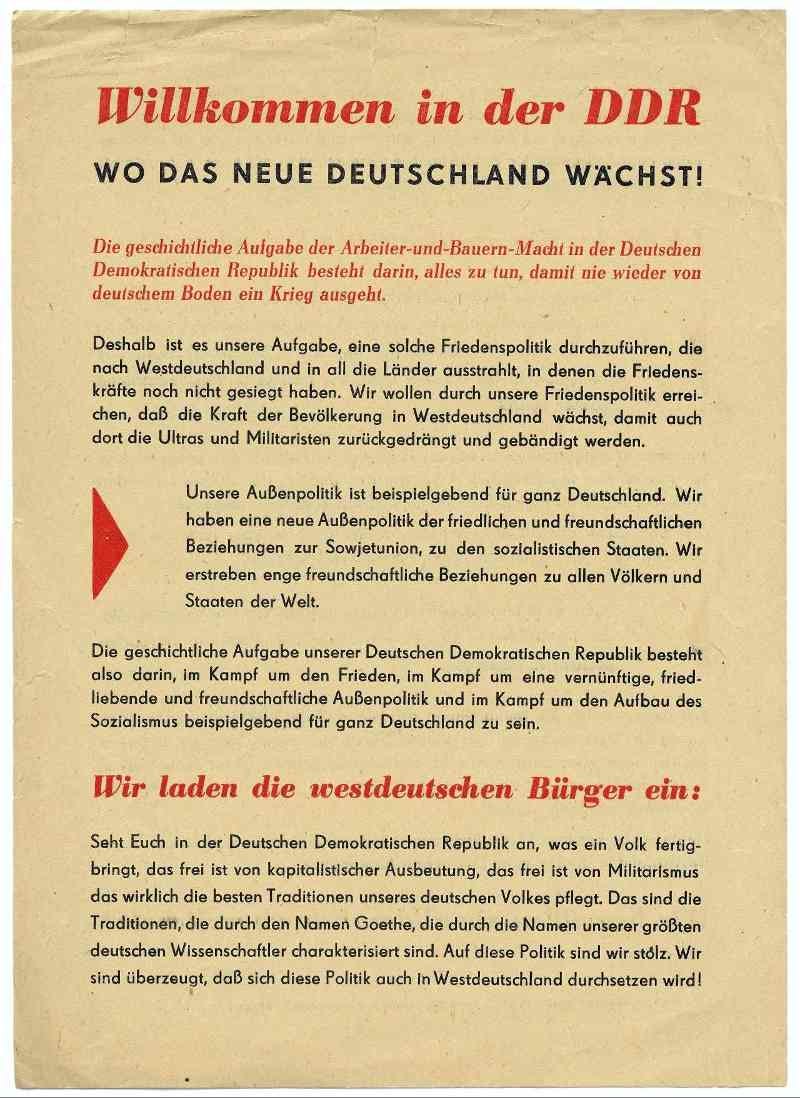
Yet, the GDR's reality starkly contradicted its self-proclaimed peaceful stance.
East Germany was a militarized state from its inception, becoming increasingly so over the decades. Uniforms were ubiquitous, from the young Pioneers to the various armed forces, omnipresent in public spaces. Militarization began in kindergarten with friend-foe indoctrination. Youth were exposed to military life through National People's Army (NVA) unit visits and winter maneuvers. Until the GDR's demise, many children dreamed of becoming Pioneers — the political children's organization embedded in the school system for kids aged six to ten, remembered in archive images for their blue neckerchiefs. As they grew older, they were strongly encouraged to join the FDJ (Free German Youth), an organization for young adults aged 14 to 25 that encompassed about 75% of East Germany's young adult population.
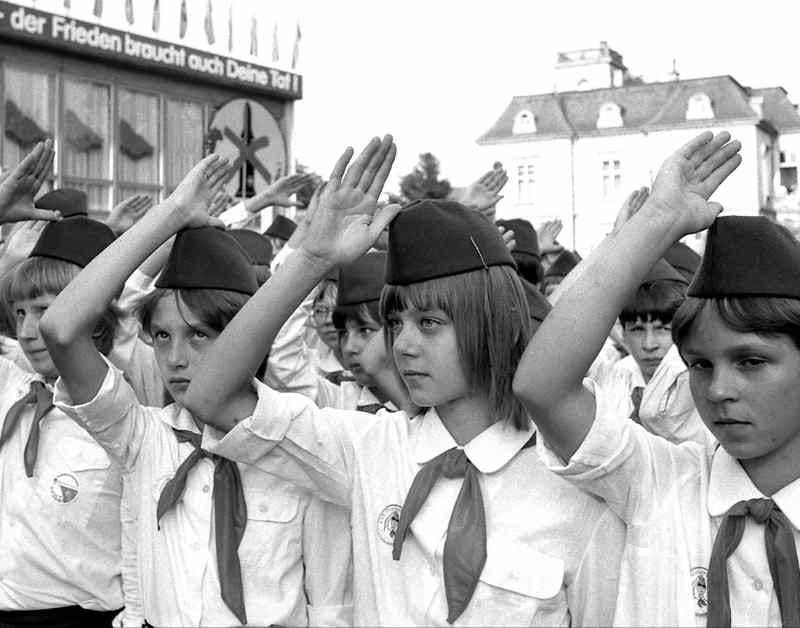
While these organizations were disciplined and propagandistic but not formally paramilitary, it was the 18-month mandatory military service introduced in 1962 that fully militarized GDR society. Those who refused military service could, from 1965, serve without weapons as "construction soldiers" (Bausoldaten). Refusing even this alternative led to imprisonment. In 1978, "military education" became a mandatory subject in all schools, including a two-week annual training camp.
The Friedenstaat GDR: military advisor and global arms dealer.
Let's examine how the GDR's commitment to peace manifested beyond its borders. How did the German Democratic Republic's peaceful stance play out on the international stage?
From the mid-1960s, the Nationale Volksarmee — the GDR's army — expanded its presence in Africa and the Middle East. It provided military advisors and experts to various governments and revolutionary movements. Among socialist states, only Cuba and the Soviet Union surpassed the GDR's foreign presence. By 1980, officers and soldiers of the National People's Army and the Ministry for State Security were stationed across a wide array of countries: Angola, Mozambique, Algeria, Libya, Iraq, Syria, South Yemen, Ethiopia, Guinea-Bissau, Benin, Nigeria, the then People's Republic of Congo, Tanzania, and Zambia.
The GDR's military involvement was multifaceted, encompassing training local forces and establishing military infrastructures. The NVA maintained a presence in Algeria and Libya until 1988. The GDR's Ministry of National Defense also conducted extensive military training programs. Thousands of soldiers and security forces from various countries — including the terrorist Palestinian organization PLO — received training either in the GDR or on-site.
But what about weapons? Here's the ironic twist: the self-proclaimed Friedenstaat GDR was, until its very end, a global leader in arms exports!
Since the early 1970s, the GDR had been deeply involved in arms exports. Initially focusing on Warsaw Pact countries, it quickly expanded to developing nations. The GDR's client list grew to include 34 countries, encompassing crisis-ridden war zones like Vietnam, Cambodia, and Mozambique, as well as brutal dictatorships such as Syria and Egypt.
Export deals burgeoned year after year. As conflicts proliferated worldwide and numerous countries and rebel groups relied on the GDR People's Army for training and assistance, adding weapons to their offerings was — in business parlance —simply a matter of economies of scope. They provided the expertise, the support, and now, the hardware.
Between 1974 and 1980, the arms trade business expanded at such a rapid pace that by the 1980s, the GDR's Ministry of Foreign Trade had designated it as the primary means to fulfill its Commercial Coordination office's mission: "foreign currency procurement through export business."
As the country's economic crisis deepened in the 1980s, the drive to sell more weapons intensified. The GDR desperately needed foreign currency or even foreign goods — from coffee to crude oil — in exchange for arms. This desperation led to highly unethical deals, such as selling arms to the PLO in 1973, despite the Munich terror attack of 1972. It also resulted in absurd situations: in 1982–1983, the GDR simultaneously supplied Iran with small arms and ammunition while providing Iraq with armored vehicles, artillery, and ammunition. To sustain this burgeoning arms trade, the weapons industry evolved into a network of firms employing over 30,000 people.
The GDR's double game: exploiting pacifism to undermine West Germany while suppressing its own peace activists.
Many of us can remember the 1980s: a time when the spectre of nuclear war loomed large over Europe. The relentless arms race between the superpowers seemed unstoppable. In this tense climate, the two German states became both the epicentre of confrontation and the main stage for a burgeoning pacifist movement.
In the mid-1970s, the Soviet Union deployed SS-20 missiles aimed at Europe. In response, the Social Democratic Chancellor Helmut Schmidt called for rearmament to restore the balance of power. In 1979, the NATO allies agreed on a dual-track strategy: first, they would engage in talks to persuade the USSR to reduce its intermediate-range missiles. If these disarmament negotiations failed, NATO would then deploy intermediate-range missiles in Germany - a decision to be taken by October 1983.
In the meantime, a vast constellation of peace movement groups emerged in West Germany. In addition, a new political party was born - the Greens. Its leader, Petra Kelly, described the Greens as an 'anti-party party', emphasising their commitment to grassroots democracy, transparency and non-violent resistance.
The USSR and the GDR tried to influence West German demonstrators to stop NATO rearmament. Their aim was to plant agents of influence in Western media, organisations and politics. While this infiltration was partially successful, a new, independent - and even openly dissident - pacifist movement emerged within the GDR itself.
By 1982-1983, the two strands of pacifism seemed to be converging, creating a dilemma for East German leaders: how to support Western pacifism to undermine NATO while containing their own domestic pacifists who challenged the GDR's increasing militarisation.
In 1982, a pacifist appeal was published in East Berlin by two well-known activists, Robert Havemann and Rainer Eppelmann. In their Berlin Appeal - Create Peace Without Weapons (Frieden schaffen ohne Waffen), the authors outlined eight points for lasting peace. They began with an observation that still resonates today in all TV debates in Germany:
Wenn es in Europa Krieg geben wird, so kann dieser Krieg nur ein Atomkrieg sein. Er wird Europa in eine Wüste verwandeln. Die in Europa in Ost und West angehäuften Waffen werden uns nicht schützen, sondern uns töten. Das ist ihre einzige Bestimmung.
If there is to be a war in Europe, it can only be a nuclear war. It will turn Europe into a desert. The weapons amassed in Europe in the East and West will not protect us, they will kill us. That is their only purpose.
Despite pressure from the SED, many peace activists signed the appeal. Two months later, in March 1982, the GDR People's Chamber passed a new military service law that included women in active military service during a state of defence. This sparked a second wave of dissident pacifism in the East, culminating in a petition addressed directly to the Chairman of the Council of State, Erich Honecker, on 12 October 1982.2 The petition gathered around 150 signatures - a large number given the repressive conditions in the GDR.
In this heated atmosphere, in May 1983, Green members of the West German Bundestag travelled to East Berlin and demonstrated on Alexanderplatz alongside East German citizens. Unsurprisingly, the Stasi quickly broke up the demonstration and arrested the East German participants. However, Petra Kelly, the leader of the Green Party, was able to meet with Honecker and asked him to make room for non-violent action.
This initiated a delicate balancing act for the GDR government. They recognized that supporting Western pacifism — both openly and covertly — was crucial to undermining NATO's arms race. However, they were equally aware of pacifism's disruptive potential within their own borders.
In October 1983, when half a million people demonstrated in Bonn, the capital of West Germany, against the deployment of US missiles, East German pacifists were allowed to travel there to take part in the week-long action of peace camps, sit-ins and human chains. But several secret agents were also present - to monitor, control the narrative (which focused entirely on US threats while ignoring Soviet expansionism) and maintain control over their citizens. Nothing new under the sun. We see similar ambiguity on German streets today.
By 1984 the GDR had almost completely suppressed its own grassroots pacifist movement. In the second half of the 1980s, however, dissent resurfaced in the form of environmental groups. In the field of ecology, activists could still operate without immediate criminalisation by the state. This shift in focus ultimately contributed to the chain of events that led to the fall of the Berlin Wall and the birth of today's unified Germany.
Today, tomorrow. In Germany, in the world.
On 3 October 2024, the Day of German Unity, some 10,000 peace demonstrators marched through Berlin under the slogans "Never again war" (Nie wieder Krieg) and "Create peace without weapons" (Frieden schaffen ohne Waffen). Among the impressive array of speakers, one stood out: Sahra Wagenknecht, founder and leader of the new party that bears her name and has shaken up the German political landscape.
Wagenknecht accused the German government of blindly following Washington's instructions. "We are once again facing the prospect of US medium-range missiles being stationed in Germany. My God, this is madness," she said. "We cannot continue in this direction. What's happening is bloody dangerous".
She took a moment to thank Mikhail Gorbachev, the former president of the Soviet Union, for ending the Cold War. She then warned participants that the war in Ukraine could escalate into a 'great European war'. Notably absent from her speech was any mention of who initiated the invasion, the war crimes committed, or any expression of sympathy for the civilian victims and Ukrainians.
This narrative is in line with her stance since early 2022: to frame the conflict as a reaction against NATO and Western arrogance. She insists it's NATO's responsibility to stop the war and negotiate with Putin's Russia, not Ukraine's. Her speeches are full of pacifist messages: "It is reckless to deploy more weapons in a world already saturated with them. We're entering a new arms race," she told German television in July 2024. Later that evening she added: "The US is a massive world power in decline. This could drag the whole world into a war". Ultimately, her focus returns to the US, echoing rhetoric from 40 years ago. This narrative feeds into the ongoing, exhausting East-West debate in Germany, culminating in the revisionist claim that "the GDR was the better state":
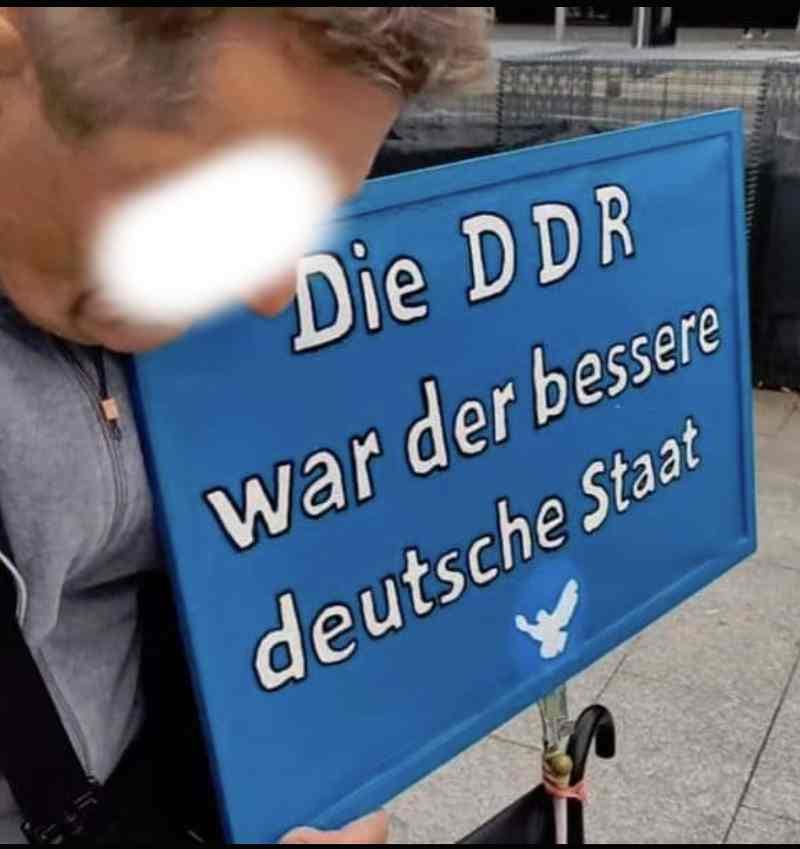
Meanwhile, pro-Palestinian demonstrators co-opted the 3 October rally, waving flags and chanting "Yallah Intifada". This isn't surprising, given that support for the PLO and other Middle Eastern groups designated as terrorist organisations was part of the late East German doctrine - all in the name of peace, of course. This brings me to the conclusion of this post, and why I believe the ambiguous story of the GDR's "state of peace" needs to be re-told beyond academic circles: it vividly illustrates our current confusion about what peace is and what it requires. It shows why the concept of peace is still manipulated to mask other geopolitical agendas - often pitting peace against freedom.
So when someone promises peace, remember to ask what they mean, how they plan to achieve it, who will benefit and who will suffer.
Bookshelf
Wolfgang Klietz, Waffenhändler in Uniform (Arms dealer in uniform), 2024
Thomas Großbölting, Friedensstaat, Leseland, Sportnation? DDR-Legenden auf dem Prüfstand (Peace state, reading country, sporting nation? GDR legends put to the test), 2013
Klaus Storkmann, Geheime Solidarität - Militärbeziehungen und Militärhilfen der DDR in die "Dritte Welt (Secret solidarity - military relations and military aid from the GDR to the ‘Third World), 2012
MDR Online Dossier: Geheime Kriege der DDR (Secret wars of the GDR), free to read, German
DDR Museum online, Die riedenstaube (The dove of peace), free to read, German
Music credits - podcast
In addition to the Royalty Free Music and Sound Effects Libraries, here you will find the "Kleine weiße Friedenstaube" by Erika Schirmer, which I embed here and partially reproduce in the podcast - performed by the DDR Children's Choir "Walter Ulbricht" of the Dresden Instrumental Group under the direction of Manfred Winter - for historical documentation (not commercial purpose).




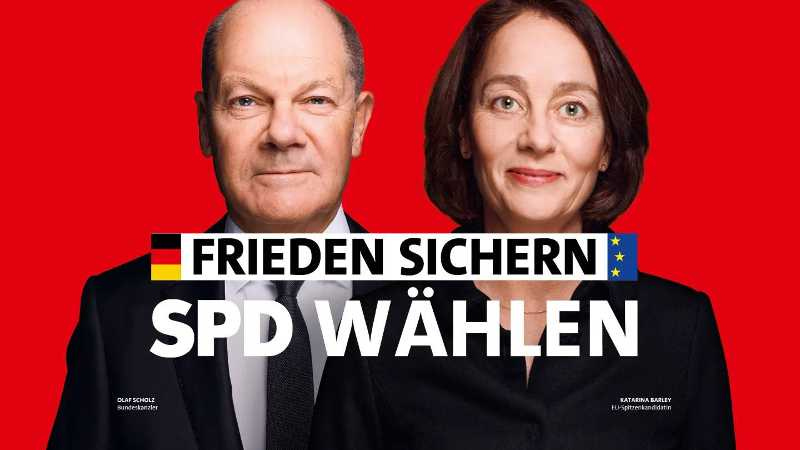
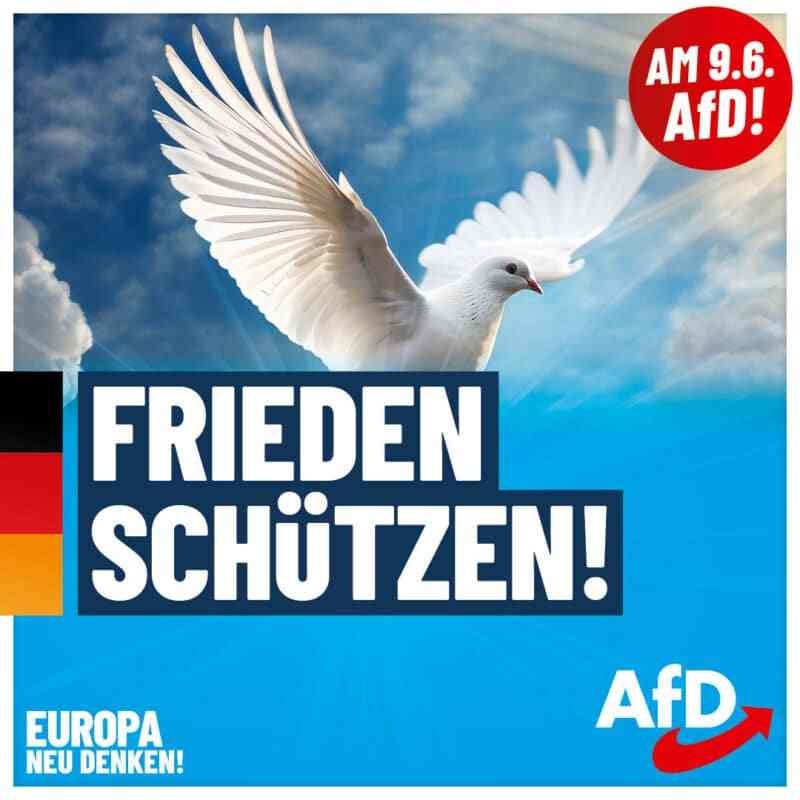
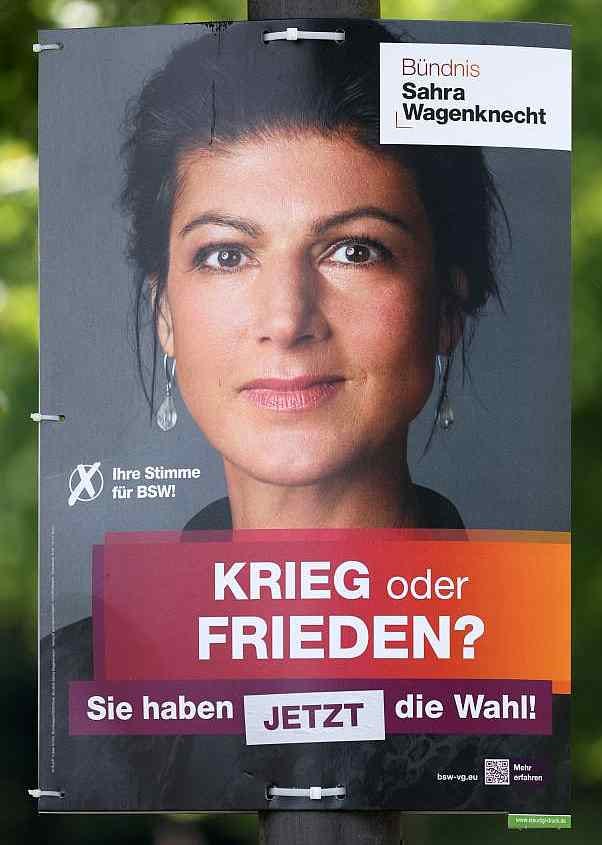
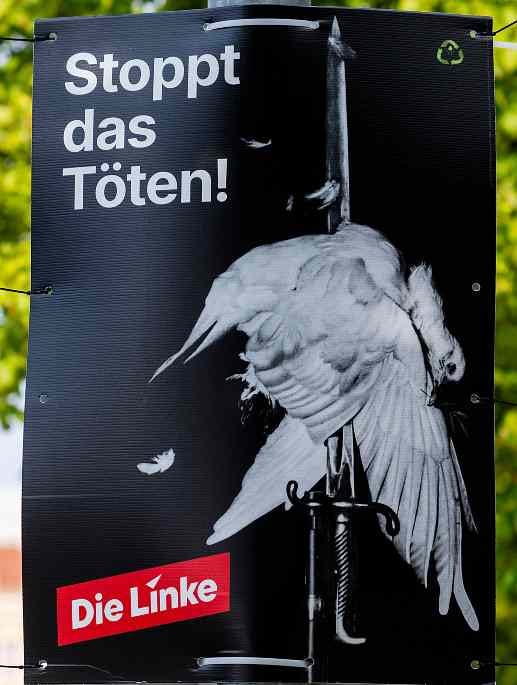

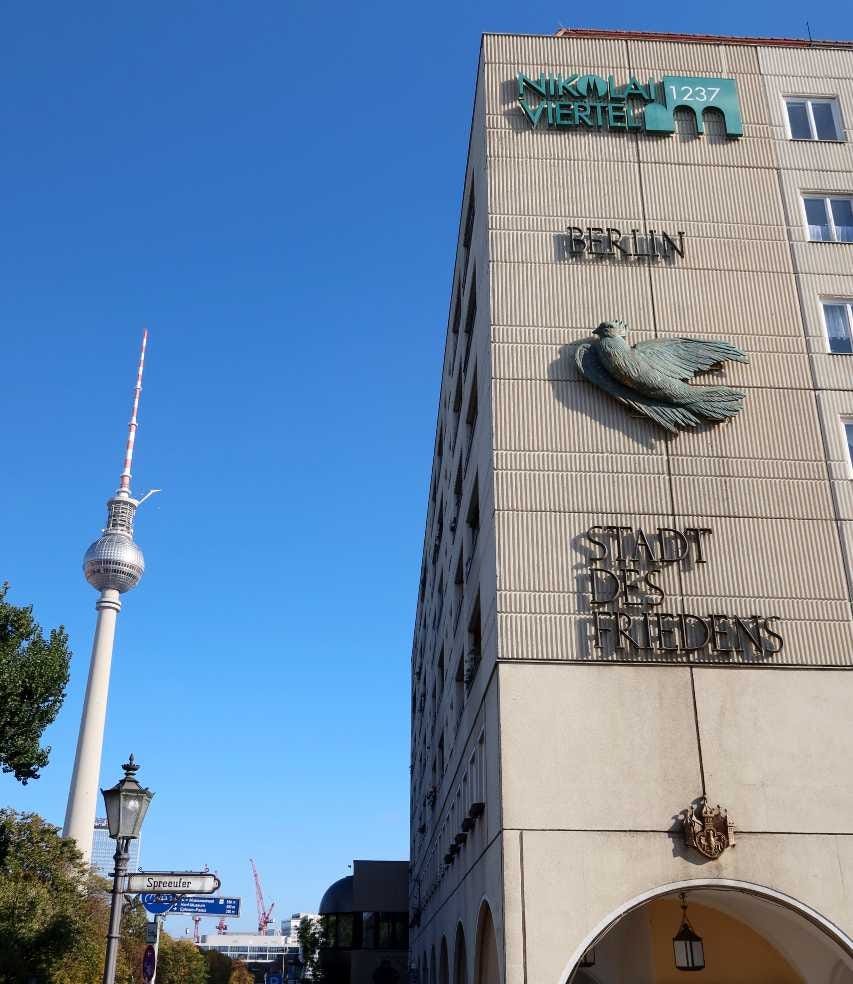


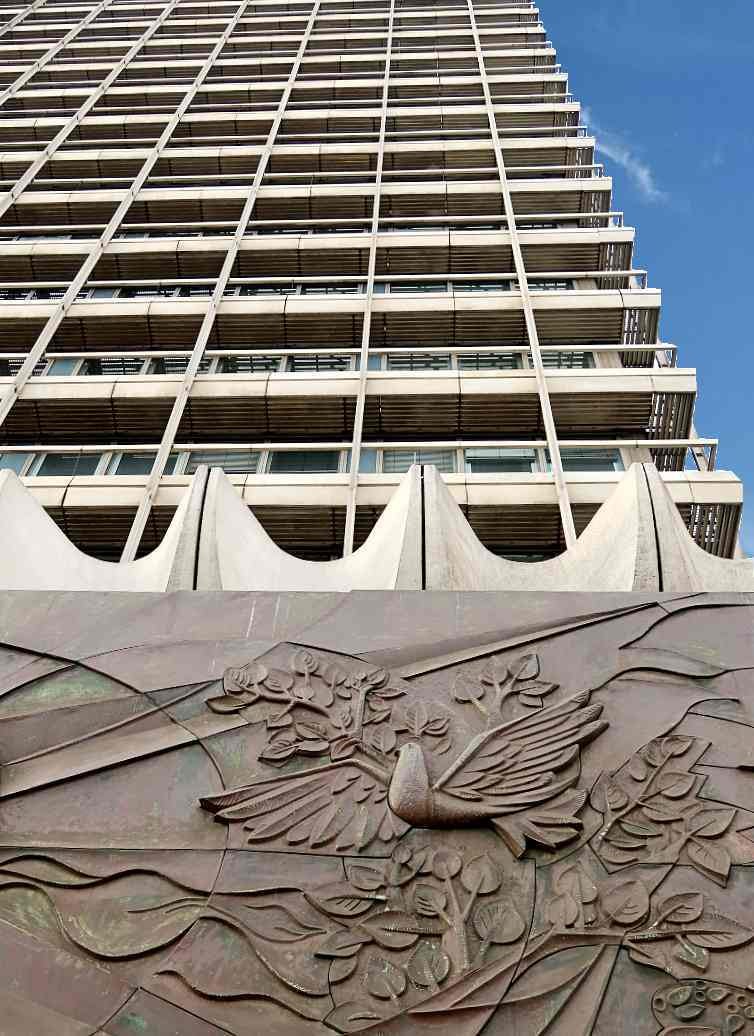

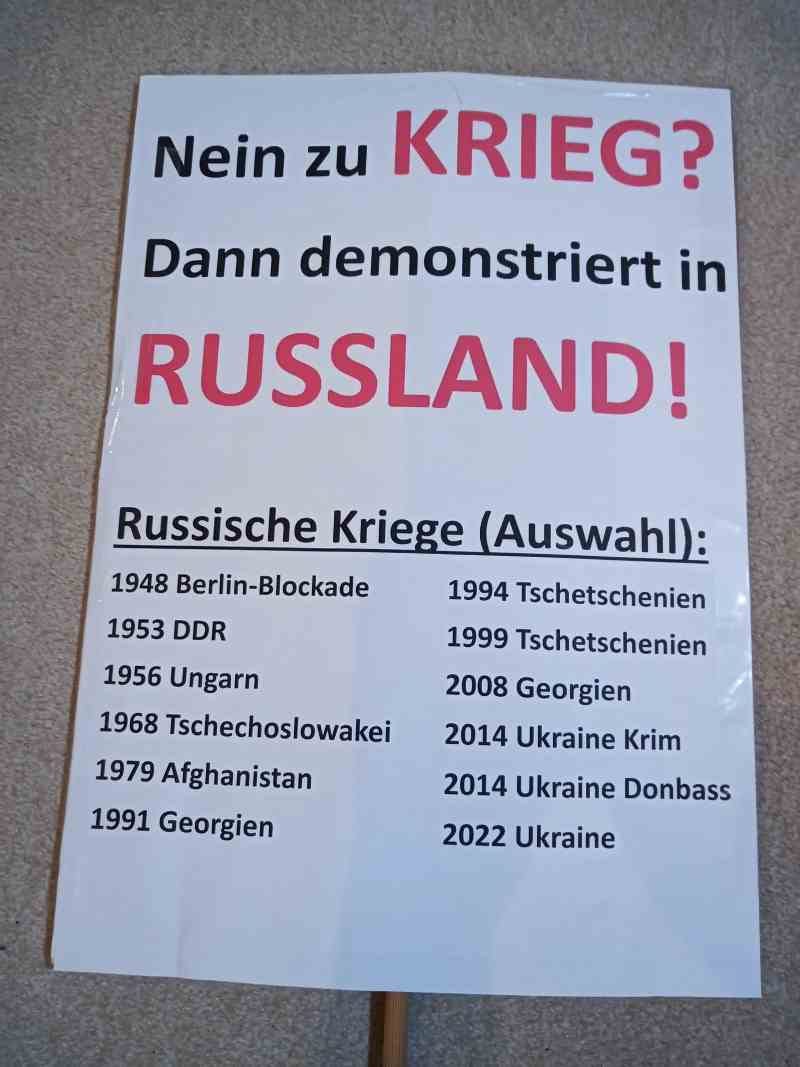


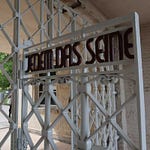





Share this post